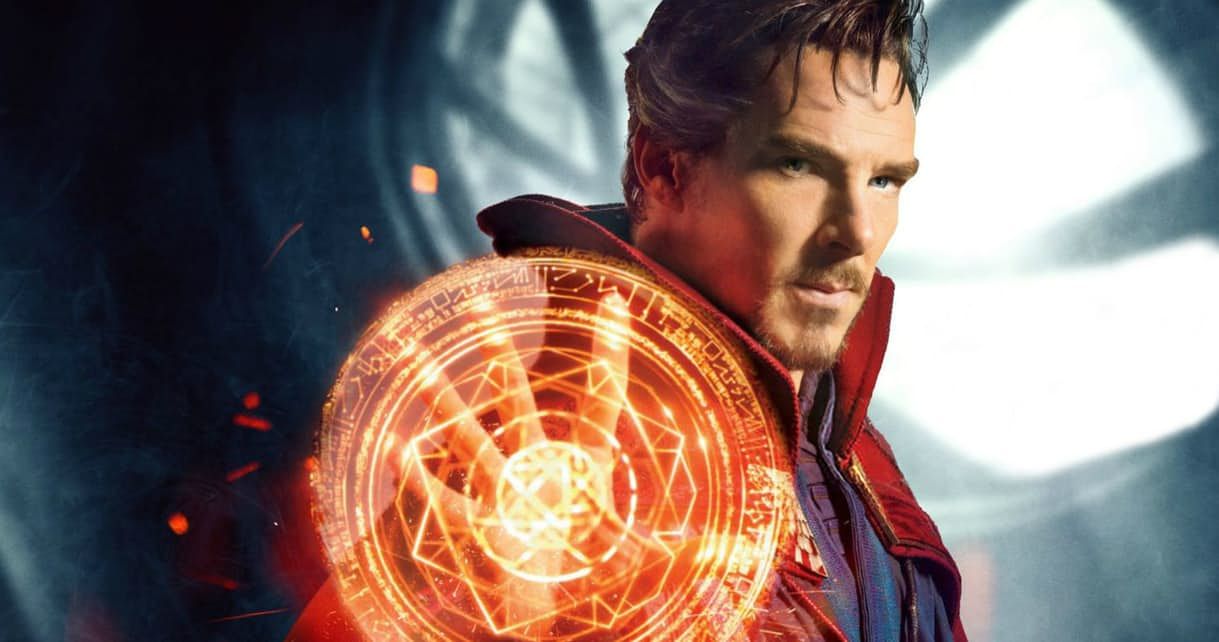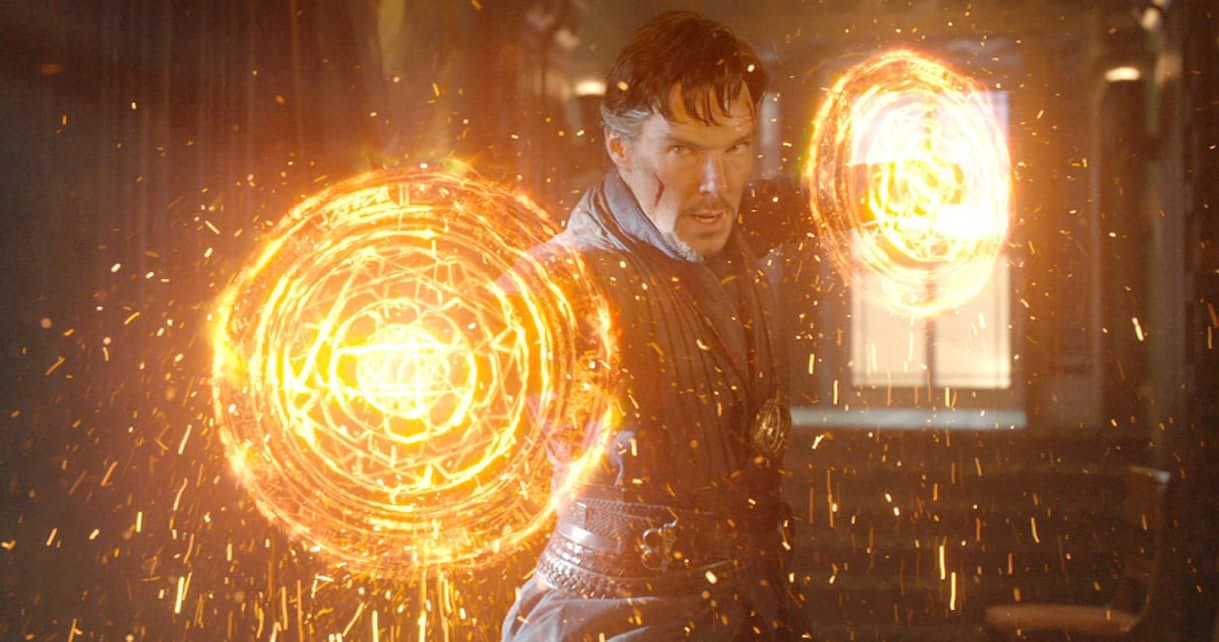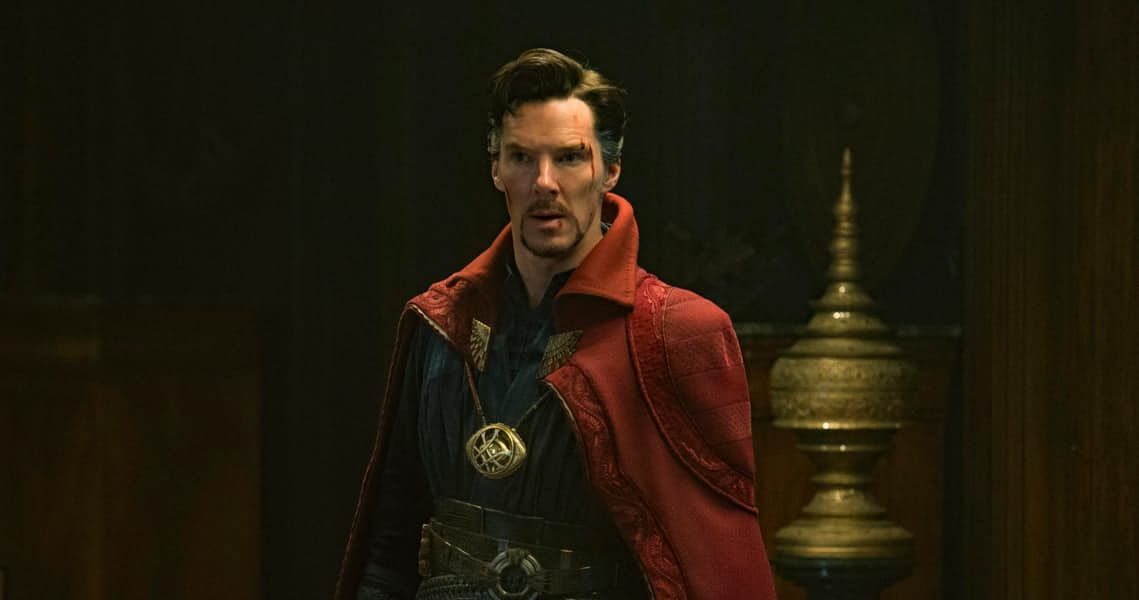It takes a particular kind of script spellcraft to bring a longstanding superhero from pages of a Marvel Comics series to the silver screen, but screenwriter Jon Spaihts knew the right kind of enchantments necessary to make a “Doctor Strange” for modern moviegoers.
Spaihts has some critical experience in making an established property feel fresh and new, having had a major creative hand in “Prometheus,” the “Alien” sort-of-prequel that’s launched a fusion of the franchises. He’s been working on a number of other re-imaginings and continuations as well, including scripts for two of the forthcoming films in Universal Studios’ ambitious shared universe featuring its stable of classic movie monsters.
RELATED: “What’s a Hoggoth?” Doctor Strange’s Greatest Invocations Explained!
But as he revealed to CBR, Spaihts had a particular affinity for Marvel’s Master of the Mystic Arts that dated back to his childhood, and a reinventing eye for shedding some of the comics’ more dated tropes in favor of a more contemporary take, conjuring a Sorcerer Supreme that felt right at home in the ever-expanding Marvel Cinematic Universe.
CBR: Tell me about getting your hands on this very coveted piece of material. What did it mean to you to be able to contribute to the screenplay and story of “Doctor Strange?”
Jon Spaihts: It was a holy grail for me. He’s been my favorite comic book character since I was very young. When I heard, I saw in the trades, that they were looking for a director for the film, I instantly called my agent and demanded to know whether there was a script yet. And when I heard that there wasn’t, I insisted they call back, get me in the room as fast as they could. I basically talked my into the process, a little earlier than writers were expected.
I had a great long sit down with Scott Derrickson, the director, and Steve Broussard, the executive producer, and pretty soon found myself in a room with those two guys, and Kevin Feige – the grandmaster of Marvel Studios – talking story.
Since you were a fan of the comic book source material, what were the elements that you really wanted to make sure were part of the movie? Also, how did you want to evolve it forward, knowing that “Doctor Strange” was created in the early '60s?
I loved the character’s love of knowledge and scholarship, and the continuity between his medical and scientific learning, and his mystical learning. I love the visual style of magic in the comics, the calligraphy, and ruins, and mandalas of light hanging in the air. The material quality of magic in that world, it was something you could touch, something you bind, something you could break.
Scott Derrickson saw eye-to-eye with me on that. He wanted the magical combat to extend the feeling of a physical fight. So martial arts were extended into another domain, by the form of sorcery to retain that very physical gut quality.
And of course, I really wanted to bring the core players and the origin story into the modern era. Even Doctor Strange in his earliest comics is a very odd, sort of Fu Manchu figure – slightly sinister, oddly drawn. The other players in the story are to some extent dated tropes, which could not play unchanged for modern viewers. Like Wong, the obedient man servant. Even The Ancient One as a swami on a mountaintop is a piece of hackneyed storytelling, and kind of a “Magical Asian” trope, and all of those things needed to be brought into the modern world with greater diversity. More than that: more humanity. We need to create each one of those people as a complex, nuanced human character.
One of the things that really struck me when I watched the film was how well the origin lent itself to setting up the entire movie. Sometimes you see these superhero movies, and the origin is sort of something that it feels like you just need to establish and get past to get into the fun, and Doctor Strange’s origin really lent itself to the full story. Tell me about integrating that into the cinematic structure you needed it to have.
The great thing is that I think it was always ready. I completely agree with you: we talked in the early process about whether we even wanted to do an origin story, because there is the concern of that form becoming shopworn. As you say, I would have put it almost the other way: that in most origin stories, the origin story is the business at hand, and at the end, you have to kind of glue a villain on the movie so that the newly matured hero has someone to fight.
But from the very beginning, Doctor Strange’s origin story had built into it a nemesis, had a villain integrated into it. So we just embraced that and brought it up to a filmic level of complexity. The beautiful thing is there is a parable of wayward disciples – really, almost three sons of The Ancient One in Strange and Mordo and Kaecilius. Each of them brilliant, each of them rebellious, each of them proud, and we see three different versions of that fate play out.
Was there anything that you found in working with Marvel that was specifically unique to that studio’s way of doing things, and that was intriguing to you?
They have a very open collaborative process, which I loved, and truly listened to anything, let the best idea win. It was great to sit at that table and be part of that creative mix. But then behind them of course they have the prodigious creative machinery of Marvel itself. So there were concept artists working from a very early point to prototype the ideas that we were imagining, and then we of course would react to their images, and turn, and get into a very positive creative feedback cycle.
So really, it’s just the blue sky openness of their creative process, and the number of artists they can bring to bear to crack a story, and to figure out how to make a film.
When they bring in an actor with the reputation and the persona of Benedict Cumberbatch, how did that tip things for you as you were continuing to refine the screenplay and the story?
It was really just a fulfillment of everybody’s dream. As much as anyone’s ever been, Benedict Cumberbatch seems born to play the part of Doctor Strange. He is utterly perfect for the role. So when we knew that we were going to make the movie, he was the first name on everybody’s list. And there was a tragic period when we thought we might not get him because of a conflict with his theater schedule.
But ultimately, Marvel wanted him enough that they made the unprecedented move of delaying the film five months in order to let him finish his run as Hamlet in London, and come be our Doctor Strange. So for me, it was an excuse to continue hearing Benedict’s voice speaking the lines, which I had already been doing for months.
You’re working on some really intriguing projects that are smack dab in the middle of this very interesting phenomenon that’s happening in franchise filmmaking right now. What’s the experience been like working with Universal as they’re working on the revival of their classic monsters as a shared universe? And how did it compare to the Marvel experience? Was it a very different kind of writing job?
It’s parallel in many ways. It is newer, of course. There are very few machines so large or well-oiled in Hollywood as Marvel’s right now. They’re on really an unprecedented streak. But the potential of the Universal Monsters is very real, and the idea of a dark and scary version of a cinematic universe in which powerful protagonists and antagonists clash and fight side by side and against one another is really exciting.
I think people love to be scared, and these characters have really deep roots in the pocket of culture. I think if we get it right, it’s going to be really exciting to watch these different strands of lore intermingle and create a scary, dark universe.
I don’t want to try to pry any spoiler-y plot details out of you, but I’m curious: with “The Mummy,” what did you see in the original film that sparked the path you wanted to go on? Was there a little revelatory moment that you picked up on when you reviewed the film that made you say, “Ah, I’m going to pursue this sort of thread for the whole thing?”
That original Karloff movie really, maybe more than anything that came after it, embraced the brooding mystery of archaeology, the ancientness of things. What it feels like to go through the relics of something thousands of years old. To contemplate the being lying before you was a person of power millennia ago, and has all that history and lost knowledge buried somehow inside them. Then that person standing up is very scary. It gives you an existential chill.
And then to boot the idea that “The Mummy” is really fundamental a love story, and that lost and forbidden love is a mode of force inside that character, the romance of it, those were both inspirations that resonate in the film we made today.
What was the hook with Van Helsing as a character? What intrigued you to take on that one as well?
Oh, I just love, really, going back to Bram Stoker’s novel. I love the idea of a scholar, a medical scholar, whose scholarship is so deep that he reaches the impossible conclusion that the malady afflicting this poor girl is actually a supernatural menace.
So to extend that notion that to be a folk scholar so deep that you actually are an encyclopedic hunter of monsters, and you know their ways and their habits, the way a big game hunter might know how the animals move. That was really exciting. So the modernized version of the monster hunter, with its roots all the way back to Bram Stoker, is really exciting.
As fun as adaptations and reimaginings are, original projects, I’m sure, are especially very close to your heart. So tell me about “Passengers.”
“Passengers,” as you can imagine, is the thrilling culmination of a decade-long journey. It’s been a very hard movie to get made. It is not like other films. Not just like anything, and that makes it a hard thing to sell. It’s a passionate and intimate story between two people unfolding on a huge cosmic stage, a very expensive stage. So it took a long while to find its way.
But in the end, the chemistry between the two actors and the extent to which they inhabit their roles is as good as anyone could hope for, and the visual spectacle of film is thrilling to see. To come down such a long road and end up with a film that is so faithful to the original story is also very rare, and I count myself extremely lucky.
Perhaps the trickiest writing assignment of all is a sequel. Let’s talk about what you wanted to do with “Pacific Rim: Maelstrom” when coming on board that franchise.
It was a challenge on that, simply to imagine in what space a sequel could unfold. But having found one, I got very excited. I worked intensely on that for a very short time, and I think helped move it into production. But when its director Steven DeKnight came aboard, he came with story ideas. So I think at this point the film very much represents his vision. I don’t know how much of the work I did might remain.
Given that you’ve had this diversity of high profile projects, coming at things from all kinds of different approaches and philosophies, what are your ambitions going forward with your writing work?
Certainly to continue to find and tell stories wrapped around big ideas, whether they’re moral dilemmas or epic predicaments. And ultimately, I think it will be to turn back toward original storytelling and get a few more of my own projects moving forward. More and more as I work on the projects in front of me, I’m looking for the story that I will write and direct. That is increasingly occupying my attention.
As fun as the franchise game has been, do you feel like Hollywood’s ready to embrace some fresh, new ideas and perhaps create some new franchises, rather than kind of continue on the path that they’ve been on for the last couple years of these very well-known titles? Do you think it’s time for some new stuff and everybody’s ready for it?
I hope so. The history of film is rich in characters who are born on screen, without ever having existed previously in a TV show, or novel, or comic book. There’s a beautiful birthplace for stories and characters, and I would like to see more original films being told. Those can happily live side by side with franchise films like the Marvel pictures. I think there’s room for them.
I’ll close with one last question: when somebody sits down this weekend to watch “Doctor Strange,” tell me what scene you want to point them to where you were just having an absolute blast.
That’s a great question. It has too many answers, but I suppose the battle in the Sanctum Sanctorum is one of the most exuberant writing experiences I had, and is a delight to see so much of it on screen.



